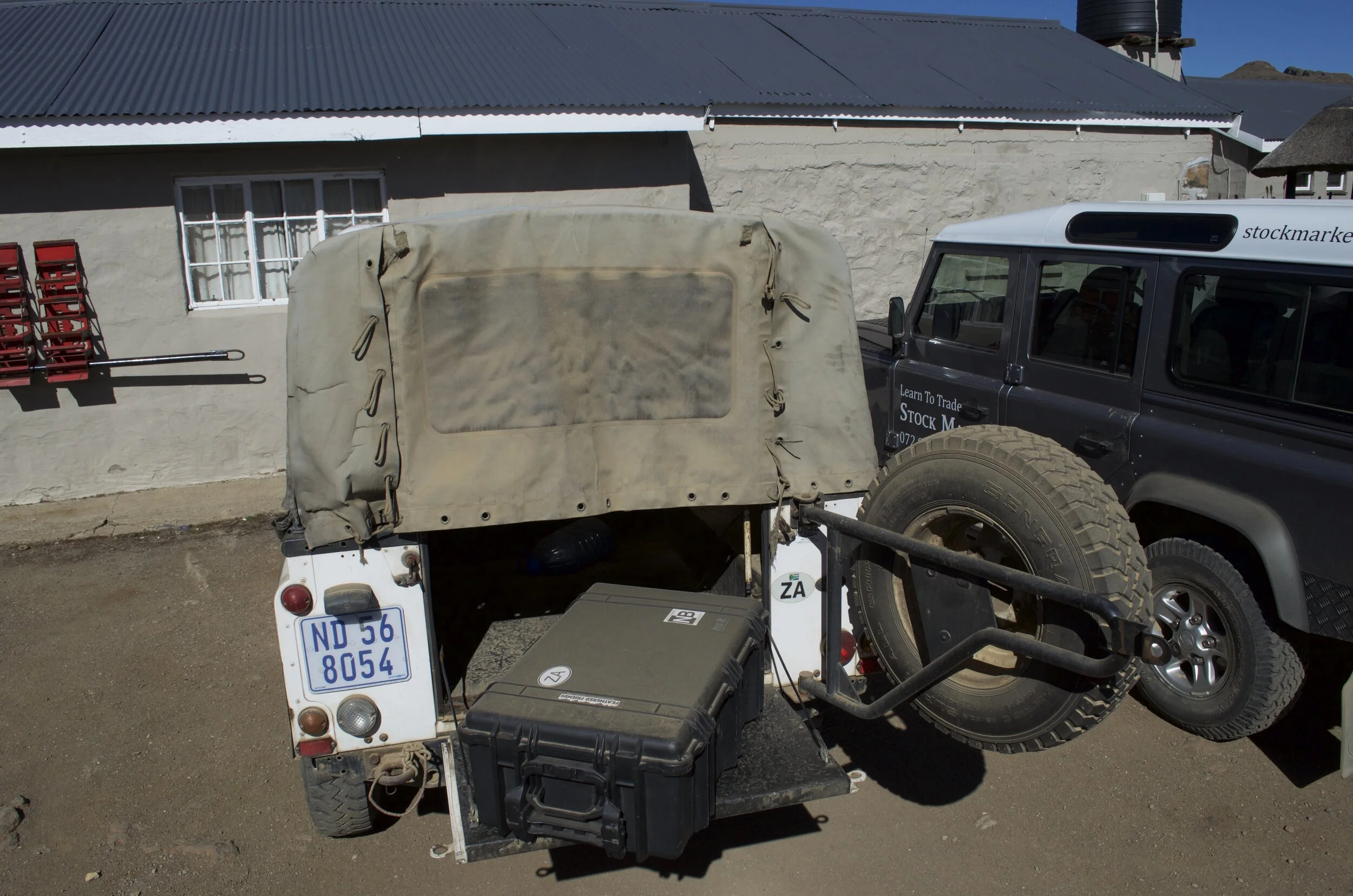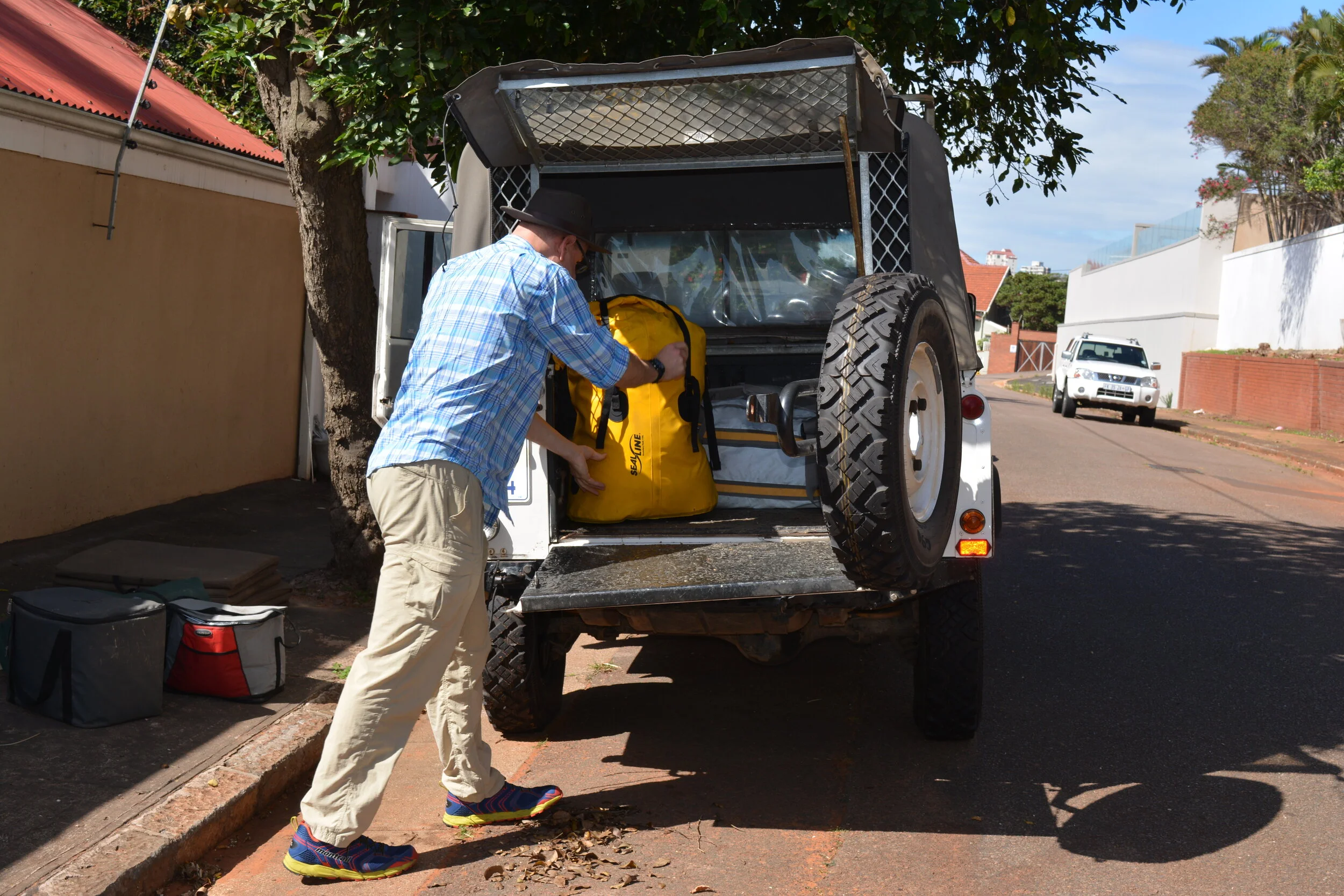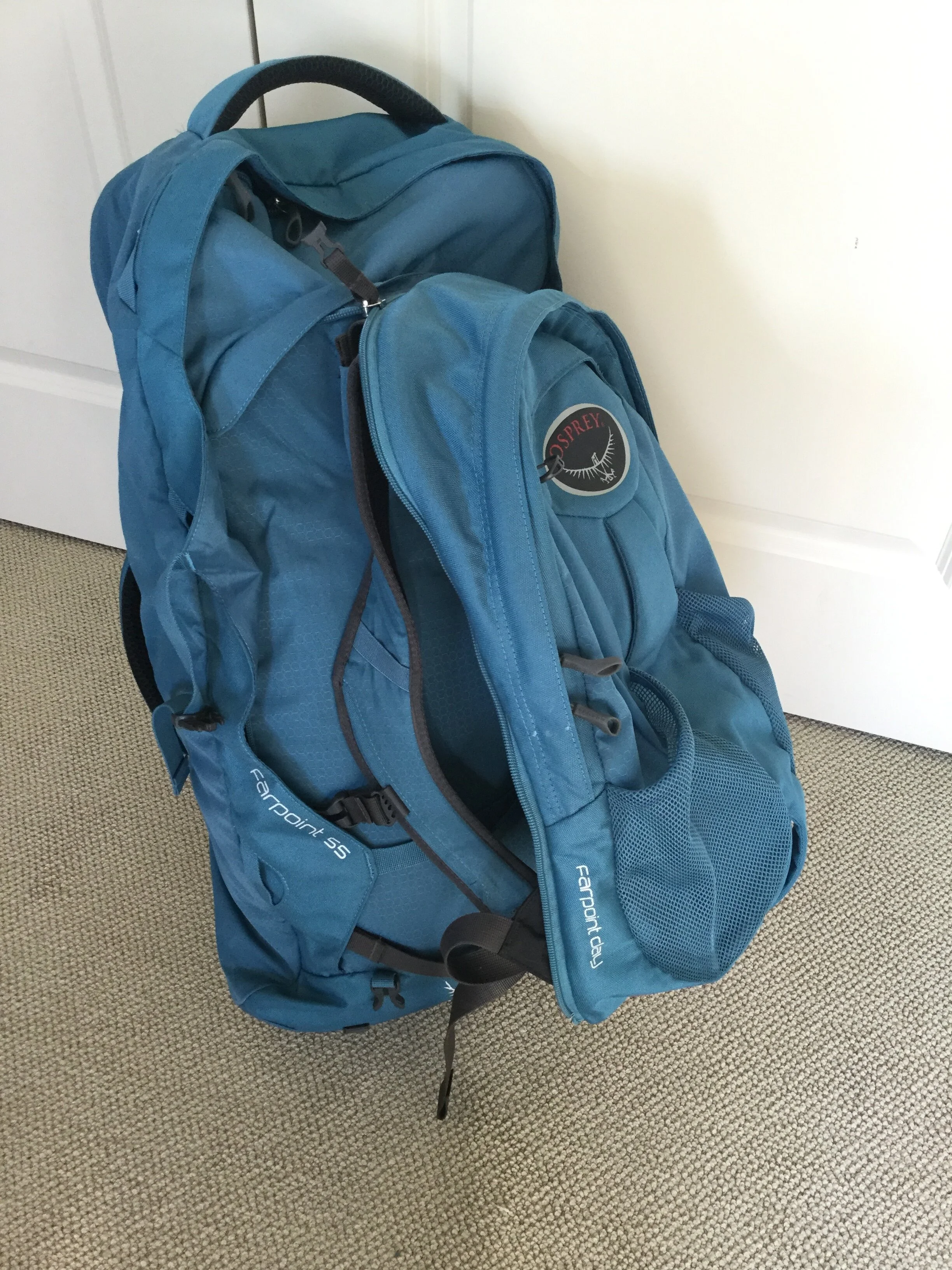Preparing for safari blog map. You are here:
Mindset and research – how to think about packing and do your homework
Luggage – picking the right container
Personal bag – ready for anything
How to pack – the ABCs
Clothing – dress for success
Safari kit – what do you really need?
What not to bring
Preparing with purpose – thinking about your impact
Luggage - picking the right container
No single piece of luggage is going to be perfect. Selecting your container is a question of trade-offs. What attributes are you willing to sacrifice in order to gain from the strengths of your choice? This section walks you through the advantages and limitations of several options. This is only a sample of the choices available, but it’s a good cross section of different approaches. You may find that something not mentioned here is best for you. As long as you apply the principles mentioned above and apply them to your selection, you’ll be fine.
Rolling suitcase
This is probably the most commonly seen style of luggage in airports around the world, and for good reason. It works for most people’s needs most of the time. You may already own one. If you do and you think it will meet your needs for a safari, then by all means use it. The object of this exercise is not to buy all new gear, but rather to find the combination of equipment that works best for you. The common rolling suitcase comes in a range of volumes and if the one you have is a good size for your needs then you’re off to a good start.
A familiar object (Unattended? Let TSA know!). Photo from Unsplash.
Advantages:
Good internal organization
Lies flat, easy to pack and access the interior when open
Most have small external pockets to keep small things handy
Decent impact protection for contents
Some styles come with hard shells, which improves impact protection
Limitations:
Not waterproof or dustproof
Mechanical complexity of moving parts (wheels, zippers, telescoping handle)
Not designed for heavy duty use
May get a little beat up on the journey
Only rolls easily on hard, smooth surfaces, which you don’t encounter much in the bush
Not the easiest to carry
If you can’t use the rolling features, you’re taking extra weight
Bottom line: if you already have a rolling suitcase, it’s the right volume, you aren’t going to have to carry it much, you don’t need it to be impervious to the elements, and you don’t care about wear and tear, then use it. Otherwise, consider different options.
Traditional suitcase
This needs no explanation. For hundreds of years this has been the choice of many travelers. I’m not a fan of these because of their limitations, but they can work. As with any of these options, it’s about finding the best fit for your particular needs.
Okay, maybe not this traditional, but you get the idea. Just because this is what people used in the 19th century doesn’t mean you can’t find more versatile options today. Photo from Unsplash.
Advantages:
Hard shell suitcases offer good impact protection
Good interior organization and access while open, depending on design
Usually reasonably light
Limitations:
Usually no external storage
Awkward to carry very far
Rolling versions are unstable
Bottom line: if you’re going to a lodge or will have very limited need to carry your luggage, the suitcase will suffice. It will also be fine if you don’t need protection from the elements. In general, however, the traditional suitcase has the potential to cause frustration on more active journeys.
Pelican case
These reinforced plastic cases are the gold standard for protection from water, dust, and impacts. They are tough, will last a lifetime, and are fairly versatile. If you have sensitive equipment that you need to safeguard, nothing beats a Pelican – literally. They aren’t for everyone, however. Larger sizes have rolling hardware.
This picture tells you all you need to know about the Pelican case. If this is your trip, this is your luggage. Photo by Nick Bratton.
Advantages:
Unsurpassed protection of your equipment from all kinds of abuse and elements
Practical in unexpected ways, such as a standing platform, floatation device, cutting board, seat, and more
Easy to secure with padlocks if you need to
Limitations:
Larger sizes are heavy and will constrain how much you can pack to stay within airline weight restrictions.
They are expensive new. Look on ebay or craigslist for used options. Sometimes military surplus stores carry them at reduced prices.
Awkward to carry for very far, especially larger sizes. Rolling hardware is stout and works well, but not great for uneven surfaces.
Internal organization is poor but accessories are available to customize the interior.
Bottom line: The Pelican case is a winner if you are bringing a high-end camera setup, sensitive medical equipment, or are going on an overland safari in a 4x4. If your trip involves a lot of walking with your luggage, you have better options.
Duffel bag
The venerable duffel bag can provide a balance of characteristics that make it well-suited to safari luggage, but not all are equally practical. There are basically three categories, listed here in order of increasing sophistication, weight, and price: a minimalist type (nylon or canvas, one main compartment, and carrying handles), an expedition type (heavy duty material, more organization, shoulder straps), and a rolling type (the monster truck of rolling luggage). The expedition type duffels are best suited for safari because they feature tougher fabric with better protection from the elements, durable hardware, and shoulder straps that make them reasonably comfortable to carry for moderate distances. Quality options are available from a range of manufacturers such as Mountain Hardwear, Arc’teryx, Osprey, Black Diamond, and others. My personal favorites are Patagonia and The North Face. (Endorsement disclosure: I receive a discount from Patagonia, but funnily enough not on their duffel bags.)
The 40-liter Black Hole duffel is a suitable size for a two-week trip when paired with a personal bag. Photo by Nick Bratton.
Advantages:
Light weight and compact
Soft sides give them flexibility to be crammed into tight spaces
Comfortable to carry – up to a point in terms of weight and distance
Can withstand years of abuse
Decent dust and water protection
Limitations:
Impact protection is poor, so pack sensitive items carefully
Not completely waterproof or dustproof
Retail prices are not cheap
Bottom line: the expedition duffel is a solid all-round performer. If you need to walk moderate distances with your luggage, the carrying comfort alone makes this an excellent option. They won’t provide the same level of protection as other choices, but with careful packing your gear will be fine under most conditions.
Dry bags
Dry bags are large waterproof sacks with roll-top closures. They excel at doing what it says on the tin: keeping things dry. By extension, they are also dustproof. Think of them as a lighter, more flexible Pelican case without the impact protection. They come in a wide range of sizes and prices, some have backpack straps, others have shoulder straps, most have no straps. I have always used Seal Line dry bags. (Endorsement disclosure: I receive a discount on Seal Line dry bags, but I began using them before I did.) NRS also makes a quality product.
This is the monster dry bag. Gargantuan volume not recommended unless absolutely necessary. Photo by Jenna Rizzo.
Advantages:
Excellent water and dust protection
Light weight
Tough material can withstand lots of abrasion, but is not cut-resistant
Backpack versions are comfortable to carry moderate distances
Limitations:
Impact protection is poor, so pack sensitive items carefully
Access to the interior is inconvenient
Bottom line: if you must have water and dust protection - but don’t need impact protection - and you want decent carrying comfort, the dry bag is a great performer. It will teach you to pack thoughtfully, as the cylindrical design makes it difficult to reach items near the bottom. Bonus – you can use this on multi-day whitewater rafting trips after your safari.
Travel backpack
What happens when you combine the carrying comfort of a hiking backpack with a convertible’s retractable roof, the dinghy on the back of a yacht, and the organization of a fishing vest? The travel backpack does so much so well that it’s a great piece of luggage for almost any trip. Loose straps tuck away or can be secured for transit, then in seconds it transforms into a backpack you can wear for miles. Some versions even have smaller day packs that attach to the main pack, satisfying your luggage and personal storage needs in an integrated package. There are lots of good models out there. I’m partial to Osprey but Gregory, Eagle Creek, Mystery Ranch, REI, and others make quality options. The fit and comfort are the most important factors in choosing a pack. Skip anything with wheels.
The Osprey Farpoint 55 with detachable Farpoint Day. This would be a great option for a couple, with the other person carrying a separate personal bag. Smaller volume versions are available but don’t come with the detachable day pack. Photo by Nick Bratton.
Advantages
Unrivaled carrying comfort
Access to contents and internal organization
Decent dust and water protection
Versatility
Limitations
Not waterproof or dustproof
Impact protection is not great, so pack sensitive items carefully
Bottom line: if you have to carry your luggage a lot, the comfort, convenience, and versatility of the travel backpack are excellent. Other options may protect your gear better, but the carrying ability of the backpack often outweighs those limitations. Some models are more comfortable than others – try them out with weight inside before you buy. Bonus – this is luggage that you can take on just about any trip, anywhere.
Combination strategies
Do you have a rolling suitcase but you need water and dust protection? Don’t want to buy a Pelican case or heavy duty dry bag? An alternative is to use an ultralight dry bag inside your suitcase. Light weight dry bags are inexpensive and offer excellent protection from the elements (when closed correctly). Your suitcase may still get muddy, soaked, or dusty, but if that doesn’t matter to you then adapt what you have. An even cheaper option is to line your suitcase with a heavy duty contractor trash bag. This won’t provide the same level of protection, but it will come close and the price is tough to beat. The main trade-off here is that your suitcase contents become harder to access, but we’ll address that in the How To Pack - the ABCs chapter.







